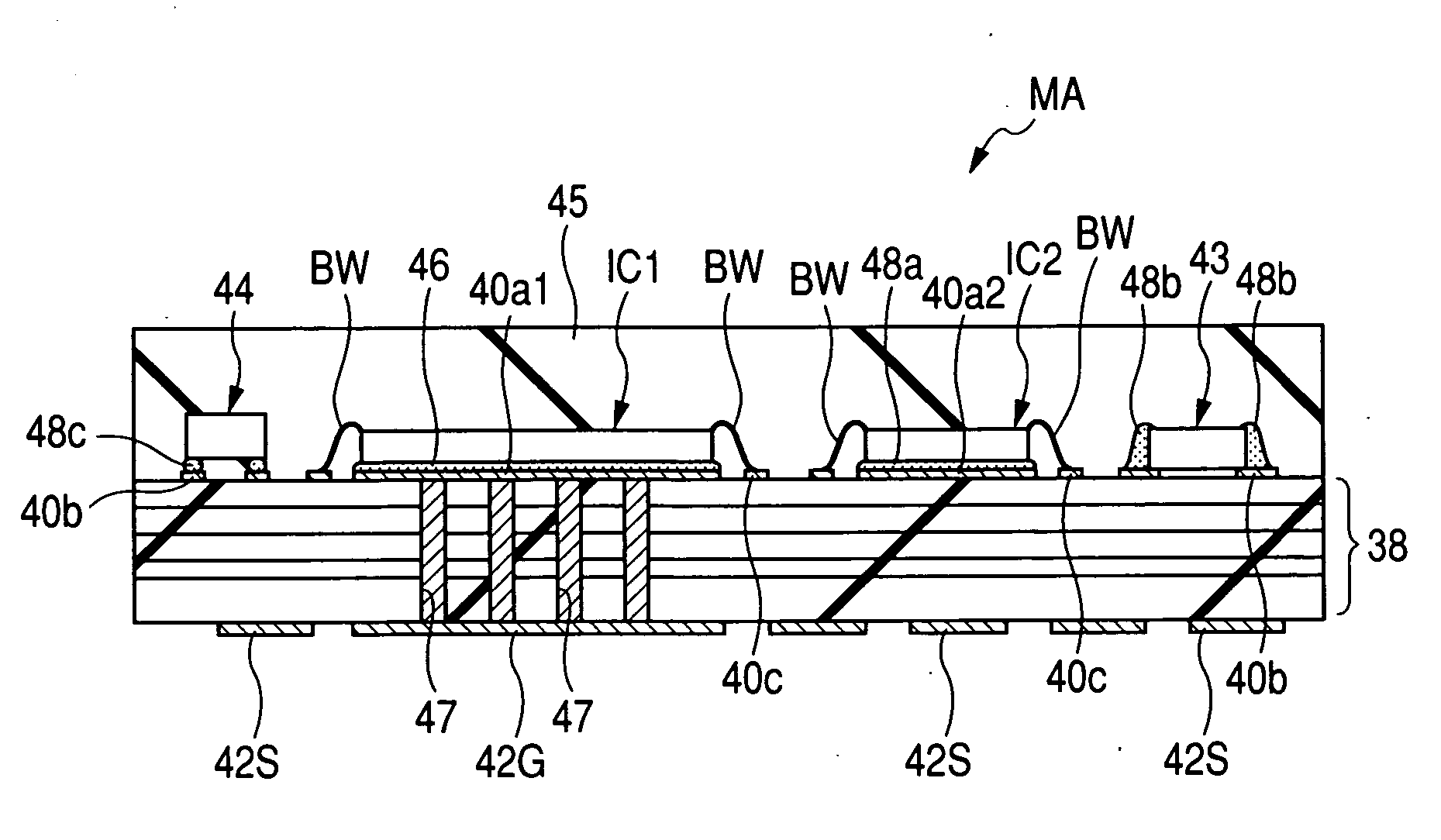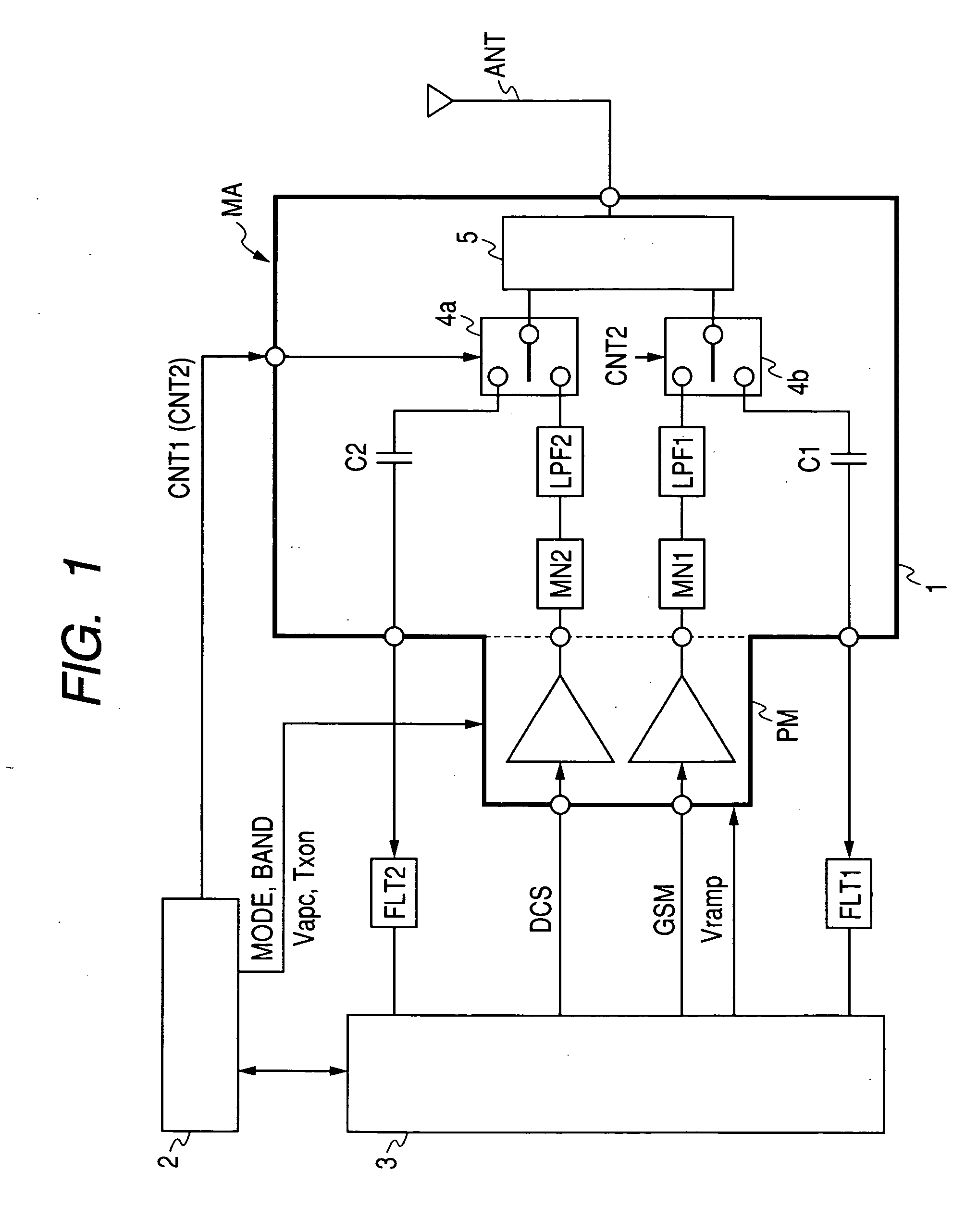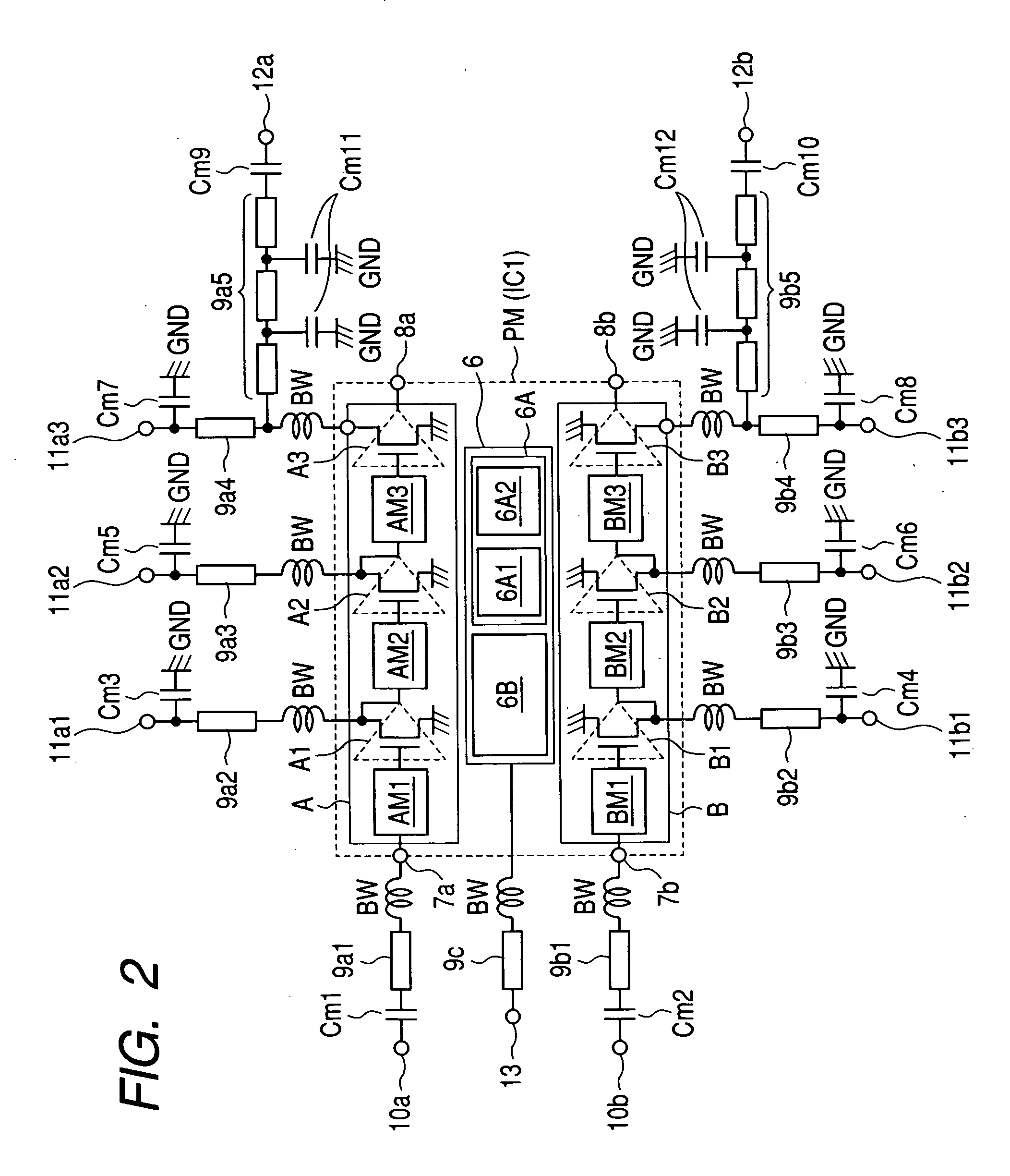Electronic device and manufacturing method of the same
a manufacturing method and technology of an electronic device, applied in the field of electronic devices, can solve the problems of requiring relatively high cost, difficulty in assembling, and difficulty in assembling, and achieve the effect of improving the reliability of the module in which a semiconductor chip and a chip component are mounted over pcb
- Summary
- Abstract
- Description
- Claims
- Application Information
AI Technical Summary
Benefits of technology
Problems solved by technology
Method used
Image
Examples
first embodiment
[0049] In the description of the first embodiment, a case where the present invention is applied to a digital cellular phone that transmits information utilizing a GSM-based network will be taken as an example.
[0050]FIG. 1 illustrates an example of the system of a digital cellular phone in the first embodiment. In the figure, reference code PM denotes a power amplifier; ANT denotes an antenna for transmitting and receiving signal waves; numeral 1 denotes a front-end device; 2 denotes a baseband circuit that converts an aural signal into a baseband signal and a received signal into an aural signal, and generates a modulation method switching signal or a band switching signal; 3 denotes a circuit for modulation / demodulation that down-converts and demodulates a received signal to generate a baseband signal and modulates a transmitted signal; codes FLT1 and FLT2 denote filters that remove noise and interfering waves from a received signal. The filter FLT1 is for GSM, and the filter FLT...
second embodiment
[0118] Description will be given to another example of a mounting process in which individual surface mount components are solder connected to a module substrate in a lump, in a second embodiment. FIG. 20 is a substantial part sectional view of a semiconductor device, explaining a mounting method following the FIG. 16 associated with the first embodiment.
[0119] As in the first embodiment, a semiconductor chip IC1 is locally heated at a temperature of 280° C. or higher, for example, a temperature of 330 to 350° C. using a hot jet 68. The semiconductor chip IC1 and substrate-side terminals 40a1 are connected with each other by high-melting point solder. At this time, a heat block 67 is not heated, and all the surface mount components mounted over PCB 38 are covered with a cover 68a. Pb-free solder is melted by after heat produced when dry air jetted onto the semiconductor chip IC1 out of the nozzle of the hot jet 68 diffuses inside the cover 68a. The regions other than the semiconduc...
third embodiment
[0121] Description will be given to another example of a mounting process in which surface mount components are solder connected to a module substrate in a lump, in a third embodiment. FIG. 21 is a substantial part sectional view of a semiconductor device, explaining a mounting method following FIG. 16 associated with the first embodiment.
[0122] As in the second embodiment, a heat block 67 is not heated, and all the surface mount components mounted over PCB 38 are covered with a cover 68a. A semiconductor chip IC1 is locally heated at a temperature of 280° C. or higher, for example, a temperature of 330 to 350° C. using a hot jet 68. The semiconductor chip IC1 and substrate-side terminals 40a1 are connected with each other by high-melting point solder. Ob-free solder is melted by after heat produced when dry air jetted out of the nozzle of the hot jet 68 diffuses inside the cover 68a. A single-chip component 43 and substrate-side terminals 40b, an integrated chip component 44 and s...
PUM
| Property | Measurement | Unit |
|---|---|---|
| thickness | aaaaa | aaaaa |
| melting point | aaaaa | aaaaa |
| temperature | aaaaa | aaaaa |
Abstract
Description
Claims
Application Information
 Login to View More
Login to View More - R&D
- Intellectual Property
- Life Sciences
- Materials
- Tech Scout
- Unparalleled Data Quality
- Higher Quality Content
- 60% Fewer Hallucinations
Browse by: Latest US Patents, China's latest patents, Technical Efficacy Thesaurus, Application Domain, Technology Topic, Popular Technical Reports.
© 2025 PatSnap. All rights reserved.Legal|Privacy policy|Modern Slavery Act Transparency Statement|Sitemap|About US| Contact US: help@patsnap.com



